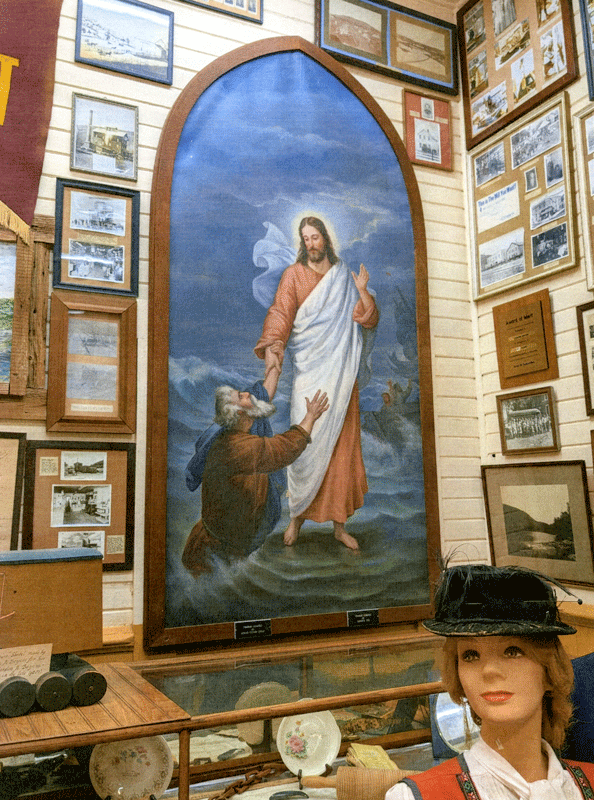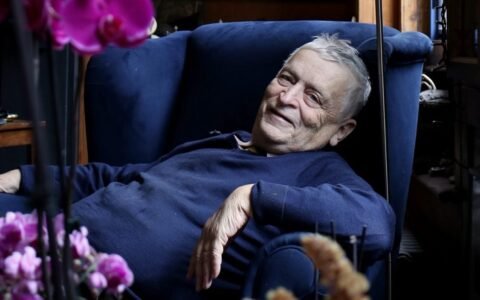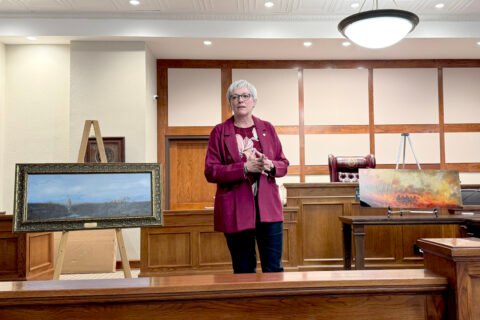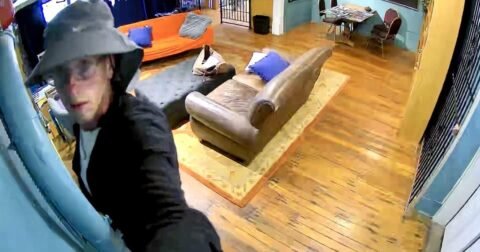By Cheryl Boyum Eaton
Peterson Station Museum Boardmember
As a young child growing up in the Peterson area in the early 1950s, my family attended the Peterson Evangelical Lutheran Church. Occasionally, we attended a function or service at the other Lutheran Church in town, Our Savior’s Lutheran Church. What was the reason for two Lutheran Churches in this small town? The Evangelical Church was affiliated with the Hauge Lutheran Synod and Our Savior’s kept the traditional Norwegian services and minister as the state church of Norway.
I don’t remember much about the sermons, which seemed very long to me. What kept my interest was the altar paintings. The one at the Evangelical Church depicted Jesus walking on the water with Peter half submerged in the water and clinging to Jesus. I would try to figure out why Peter was in the water. Did he fall out of the boat? Was he standing on something? Would he pull Jesus under? My pondering kept me occupied until the service was over.
The altar painting at Our Savior’s depicted the Resurrection with Jesus appearing to Mary Magdalene at the tomb. Both paintings were done by artist Sara Kirkeberg Raugland. A bit about her – she was born to Norwegian immigrants at Elgin, Iowa in 1862. One of her teachers encouraged her parents to have her pursue further art studies. In 1885 or 1886, she went to Minneapolis to study art, probably with one of the Norwegian immigrant artists living there. She married Carl Raugland in 1891, and in 1893 she published a catalog of her paintings through the Augsburg Publishing Company and in other Norwegian church publications. She painted approximately 300 paintings up to 1918 when her husband died and she had to move in with her daughter. She did not have the space to continue such large paintings.
The painting of Jesus and Peter on the Sea of Galilee was one of her most popular paintings. The cost of her paintings ranged from $50 to $100. Most of her paintings were purchased in the Midwest and many still remain in their original churches. This painting was purchased after lightning struck the Evangelical Church and it was rebuilt in 1901.
In 1951, the two churches voted to unite and become Grace Lutheran Church. Both churches were used alternately for a time, then Grace Lutheran Church was remodeled in the mid-1950s and Our Savior’s Church was sold and torn down. Both altar paintings were removed and stored, and a cross with red wall hanging replaced the painting. I think the reasoning was for a new start, so neither alter painting was used.
John Erickson, the original curator of the Peterson Station Museum, and his committee bought the Peterson Depot in 1973 for $1 with the stipulation it had to be moved off railroad property. Gladine Moen Hamilton donated its current site, the northeast corner of Mill and Centennial streets. This had been the previous location of her father’s store, the Moen Casket & Mercantile Store.
Once the depot was situated on its new site and ready for Peterson related artifacts, the committee began looking for the church altar paintings. Where were they? It had been about 20 years since they had been removed from their original churches. After much questioning of the locals involved in the church remodeling and sale of Our Savior’s Church, the paintings were found in “somebody’s closet.” They needed to be remounted and George Himlie, a former member of Our Savior’s Church, reframed both paintings and they now hang in the waiting room area of the previous train depot, now Peterson Station Museum.
References: Norwegian-American Church Art by Kristin M. Anderson for an exhibit of altar paintings at Vesterheim Museum, Decorah, Iowa, 2001; and Altar Paintings of Sarah Kirkeberg Raugland by Elaine Ask, 2014.
Photo submitted
Photo submitted







